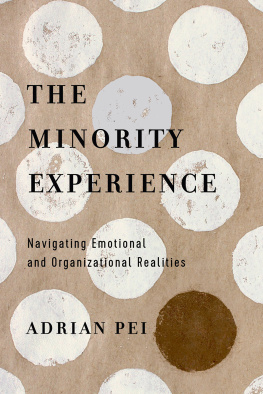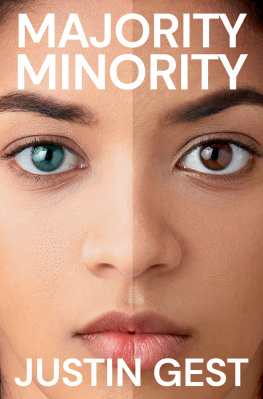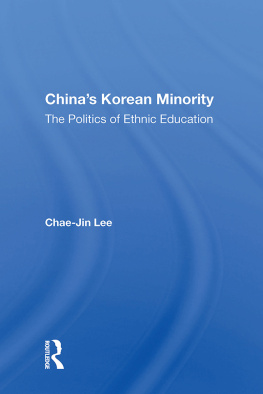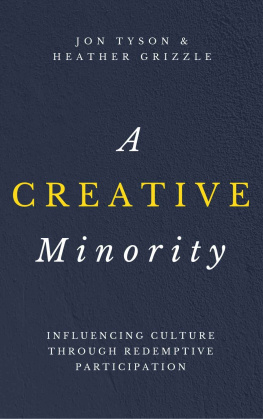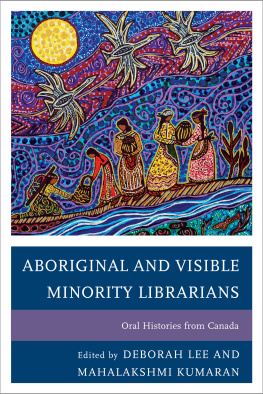Sommaire
Pagination de l'dition papier
Guide
THE
MINORITY
EXPERIENCE
Navigating Emotional
and Organizational Realities
ADRIAN PEI
InterVarsity Press
P.O. Box 1400, Downers Grove, IL 60515-1426
ivpress.com
2018 by Adrian Su-Chen Pei
All rights reserved. No part of this book may be reproduced in any form without written permission from InterVarsity Press.
InterVarsity Press is the book-publishing division of InterVarsity Christian Fellowship/USA, a
movement of students and faculty active on campus at hundreds of universities, colleges, and schools
of nursing in the United States of America, and a member movement of the International Fellowship
of Evangelical Students. For information about local and regional activities, visit intervarsity.org.
All Scripture quotations, unless otherwise indicated, are taken from The Holy Bible, New International Version, NIV. Copyright 1973, 1978, 1984, 2011 by Biblica, Inc.Used by permission of Zondervan. All rights reserved worldwide. www.zondervan.com. The NIV and New International Version are trademarks registered in the United States Patent and Trademark Office by Biblica, Inc.
While any stories in this book are true, some names and identifying information may have been
changed to protect the privacy of individuals.
Cover design: Faceout Studio
Interior design: Daniel van Loon
ISBN 978-0-8308-7392-0 (digital)
ISBN 978-0-8308-4548-4 (print)
This digital document has been produced by Nord Compo.
To my father, Jack Pei.
Your gentle conviction has shown me what a strong Asian American leader looks like. You have endured courageously through pain, sacrificed as my biggest advocate, and documented our family histories for future generations to cherish. I love you, and I am so proud to be your son.
PREFACE
This was not an easy book to write.
Race is one of the most polarizing topics in the world today. While some people love to read every blog and news item related to race, others dont think we should talk about it at all. Some people are eager to become more culturally intelligent, while others bemoan how they need to be so PC about everything.
I didnt start out trying to tackle all these issues when I started the process of this book. I just wanted to share my storyof what it was like for me growing up in the United States as a person of color and working for a majority-white organization in my adult years. However, as I read biographies of ethnic minorities and studied history books, the scope of my thinking began to broaden. I discovered certain themes. Self-doubt. Domestication. Weariness. Invisibility. There seemed to be something in common among minoritiesdespite disparities in time, geography, and ethnicity. These themes even appeared in the stories of the Bible, from Moses to Daniel to Jesus himself. I began to write these themes down.
Then as I studied current experts in racial identity formation, I began to gain new language and categories to help me frame my learnings, and to explain some of my own experiences as a minority. I felt better equipped to understand and engage some of the debates I heard around me in the office, at the dinner table, and online. I compiled these insights as well, wondering if they might be helpful to others too. My studies helped me to appreciate the sobering challenge of honoring the sacred stories of peoples who have been overlooked, while also explicating concepts with precision and nuance. How could I do this justice?
Then there was my own story. As I began to write, waves of painful memories and nostalgia came over me. A shy, skinny Asian American kid paralyzed in fear on the baseball field, just trying to fit in on an all-white team. An angry teenager fuming at racist stereotypes on the television screen. A frustrated adult kicking furniture in his house, feeling betrayed by his minority coworkers and friends. Those were me. Revisiting these scenes was not easy, nor was writing about them. But I resolved to face my fears, and even decided to reach out to people from my past to try to make peace. Some of those conversations are included in the pages of this book.
Writing this book also happened in the midst of personal tragedy and challenge in my family. My father suffered a massive stroke that almost took his life. One of my daughters was diagnosed with special needs. Some days it was hard to muster the energy to lift a finger to write. But in another way, this pain gave meaning to my efforts. I wanted to finish this book during the years my father still had left, to honor his sacrifices and love for me. I told him I would dedicate the book to him because of all he had taught me about lifeand all the times he had encouraged me to pursue my dreams of writing. Raising my daughter was motivation enough to fight for a better world for her, as a woman and as a person of color.
So I took all of thisethnic minority biographies, the history books, race scholars, and my own story and family circumstancesand poured it into this book. I compiled and documented all the insights and lessons I had learned, in the hope that it might help others like me.
When I write others like me, I mean my primary audience for this bookethnic minorities who have wrestled in any way with finding their place in society, or within a majority-white organization. I wanted to write that they might more clearly identify the emotions behind their experiences as minorities. Perhaps in the pages of overlooked history, they might uncover the events and forces that had subconsciously shaped their identity. Perhaps they might gain language and categories to name their experiences (like I did) and equip them for todays ongoing debates and conversations about race. Most of all, I wanted them to know that they were not alone.
That is why I wrote this book. Of course, I hope that others may find it useful as well. Some readers from the majority culture may be looking to understand the deeper realities of what it means to be a minority, or to gather some ideas for how to diversify their organization. Many staff from churches as well as parachurch and nonprofit organizations may have just started exploring race and diversity, and are looking to take the next step. Also, while this book is written from a faith perspective, some nonreligious readers may be interested in how Christians are seeking to address the critical issues of race and justice in our time.
Finally, I write this book from an organizational development perspective, which has been my field of study and work for over a decade. My experience leads me to believe that leading change isnt just about transforming individual behavior, but about addressing broader systemic issues. Thus, Ive included research and examples from some of the leading organizational thinkers in both the ministry and corporate world, where I currently work full-time.
The primary organizational context I write about is Cru, which is the largest missions organization in the world. For about a decade, I worked for the Asian American branch of Cru, which is called Epic Movement. My experiences included leading a human resources team, developing core values, and designing ethnic minority leadership curriculum and training. My wife and I are still on staff part-time with Cru.
Some may be curious what Cru leaders think about a book like this being written about their organization. I had questions myself about whether my honest and painful experiences would be welcomed or not. However, each time Ive shared my stories of challenge with white Cru leaders, theyve told me how helpful they areand to keep writing and sharing. When I pitched the idea of this book to some other Cru executives, they voiced their support and asked how they could help. As Ive worked on this manuscript, Ive submitted drafts to leaders in the organization for their feedback. This book is truly a work of partnership

